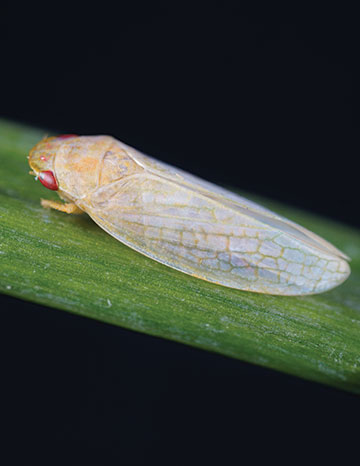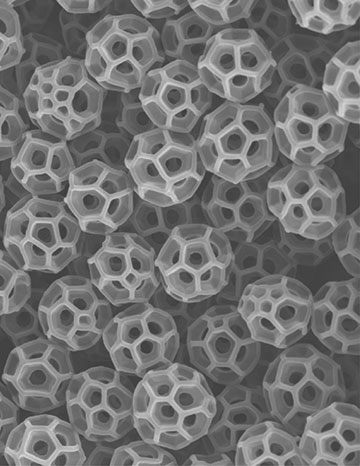
The unique geometry of the brochosomes produced by leafhoppers effectively reduces the reflection of both ultraviolet and visible light. [Image: Lin Wang and Tak-Sing Wong/Penn State]
Researchers at Penn State University, USA, believe that the nanostructured particles produced by leafhoppers, a common backyard insect, could inspire a new generation of optical materials for applications such as invisibility cloaks and antireflective coatings (Proc. Natl. Acad. Sci. USA, doi: 10.1073/pnas.2312700121). By precisely replicating the complex geometry of the particles, called brochosomes, the team showed that its lab-made versions can reduce light reflection by up to 94%
“With a new strategy to regulate light reflection on a surface, we might be able to hide the thermal signatures of humans or machines,” commented lead author Lin Wang. “Perhaps someday people could develop a thermal invisibility cloak based on the tricks used by leafhoppers.”
Replicating brochosomes
The unusual particles have a buckyball-shaped geometry with open holes distributed across their surfaces, all connected together via a central cavity. Previous studies have shown that the sizes of the brochosomes and holes are remarkably consistent between leafhopper species, around 600 nm and 200 nm, respectively, but efforts to understand their properties and purpose have been hindered by the difficulty of making such complex structures in the lab.

The unusual buckyball-shaped geometry of the brochosomes with open holes distributed across their surface. [Image: Lin Wang and Tak-Sing Wong/Penn State]
The Penn State researchers created simplified versions of the particles back in 2017, but in this new work they used an advanced 3D-printing method to reproduce the exact geometry of natural brochosomes. Since the resolution of the printing technique could not replicate their nanoscale features, the researchers fabricated scaled-up models, around 20 µm across, that reflect infrared light in the same way the natural particles interact with visible and ultraviolet frequencies.
Their results show that the open geometry of the particles scatters up to 80% of light at wavelengths similar to their diameter, which in nature would provide the leafhoppers with an effective antireflective shield at visible frequencies. The surface holes also absorb light at shorter wavelengths, which would help the insects to avoid detection by predators that possess UV vision, such as birds and reptiles.
Future materials
The researchers believe that the unique properties of brochosomes could inspire the design of future optical materials, such as improved coatings to enhance the efficiency of solar cells or to protect drugs against light-induced damage. Brochosome-like structures could also be exploited to encrypt information, ensuring that sensitive data can only be viewed at specific wavelengths.
“Our work shows how understanding nature can help us to develop modern technologies,” added Wang. “We have just focused on one insect species, but there are many more amazing insects out there that are waiting for material scientists to study.”
